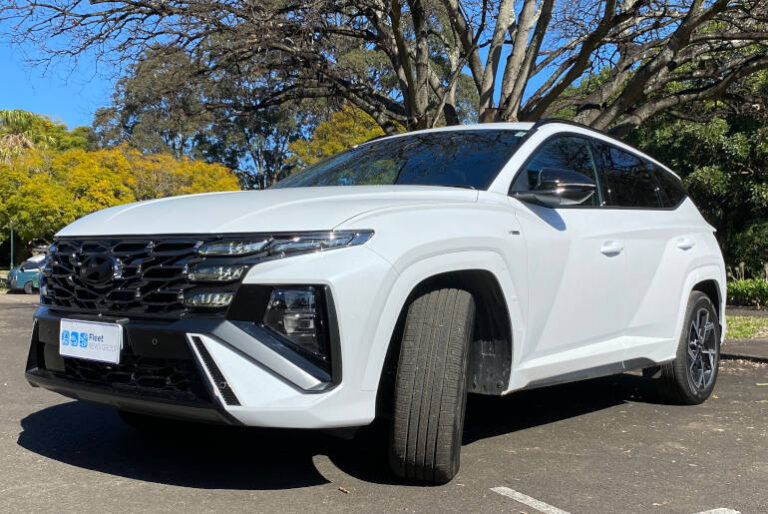Hyundai has redesigned the Tucson for 2024, giving it a fresh new look inside and out. But the biggest update is the addition of a hybrid powertrain option – the first ever for the Tucson nameplate. After spending a week behind the wheel, I can confidently say the Tucson Hybrid is an extremely compelling choice for fleet and novated lease buyers looking to save at the pump, or reduce emissions, without sacrificing the versatility of an SUV.
Powering the Tucson Hybrid is a 1.6-litre turbocharged four-cylinder engine paired with an electric motor and a 1.49 kWh battery pack. The hybrid system produces a combined 170 kW and 360 Nm routed through a 6-speed automatic transmission. This powertrain provides plenty of punch for merging onto the highway or passing slower traffic. At no point did the Tucson feel underpowered or struggle to get up to speed.
What’s most impressive is just how seamlessly the engine and electric motor work together. The transitions between pure electric power, hybrid operation, and petrol-only propulsion are virtually seamless. There’s no shuddering or jolting, just smooth linear power delivery. Hyundai has done an excellent job calibrating the hybrid system.
The Tucson Hybrid also shines in terms of efficiency. Hyundai rates it at just 5.3 L/100km combined, which is stellar for a vehicle of this size and capability. In my real-world testing, I averaged around 6.0 L/100km with a mix of city and highway driving. That’s a massive improvement over the non-hybrid Tucson.
Helping maximise efficiency is an adjustable regenerative braking system. It allows you to increase or decrease the amount of brake energy recuperation based on your driving preferences. Crank it up and the Tucson will aggressively slow itself when lifting off the accelerator, enabling more efficient one-pedal style driving. This feature gives the Tucson an EV-like feel and will help ease the transition to a full electric for fleets looking to make that move down the road.
Inside, the Tucson gets a fresh new interior design with a horizontal layout for the dash and centre console. The dual 12.3-inch displays look modern and upscale, while still retaining buttons for key functions like climate control. This prevents you from having to dig through endless sub-menus to make simple adjustments. Material quality is excellent, with soft-touch surfaces throughout the cabin and attractive contrast stitching on higher trims.
Passenger space is also generous, especially in the back seat. There’s plenty of legroom for adults and the flat floor makes it comfortable for three across. Cargo room is plentiful as well at 616 litres behind the second row.
The 2024 Tucson Hybrid starts at $49,000 for the base model and climbs to around $65,000 for the top-of-the-line Premium trim. That pricing is very competitive when you consider the high level of standard equipment, premium cabin appointments, and of course the fuel-saving hybrid powertrain. The N-Line pack improves the external styling and an interior treatment that is worth considering.
Overall, the new Hyundai Tucson Hybrid is an outstanding package that ticks all the right boxes for today’s SUV buyers. It delivers excellent fuel efficiency without compromising interior space, power, or driving enjoyment. For fleets looking to reduce emissions and operating costs, the Tucson Hybrid deserves serious consideration. Hyundai has knocked it out of the park.






